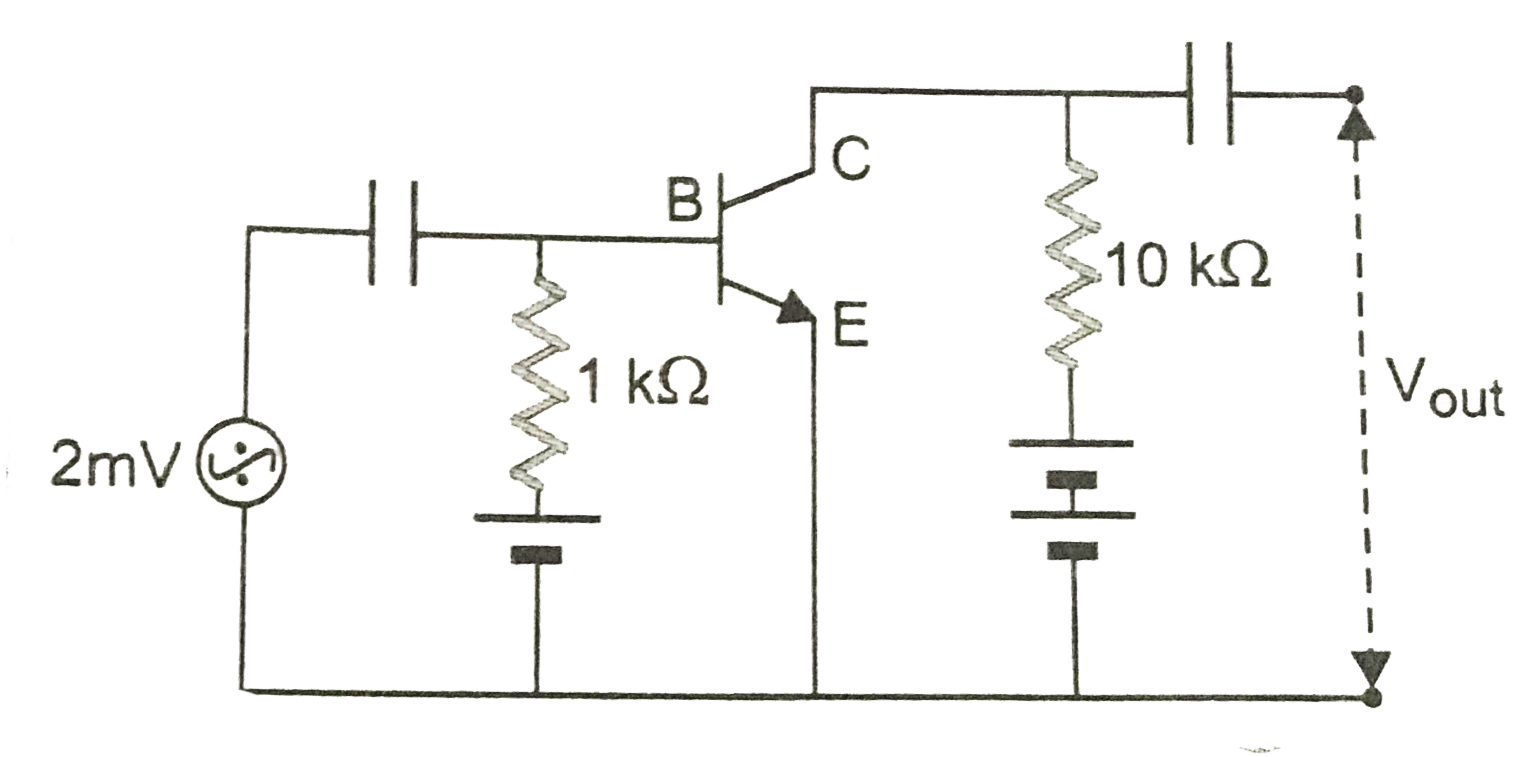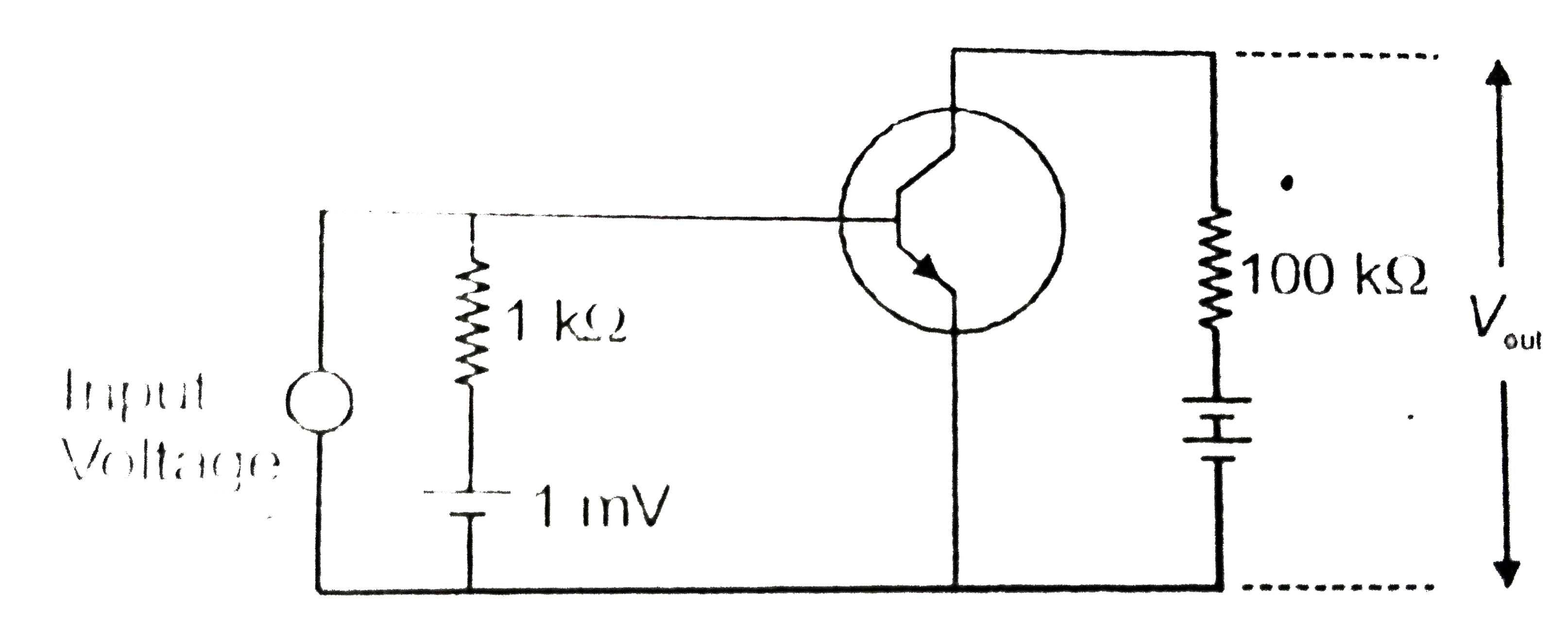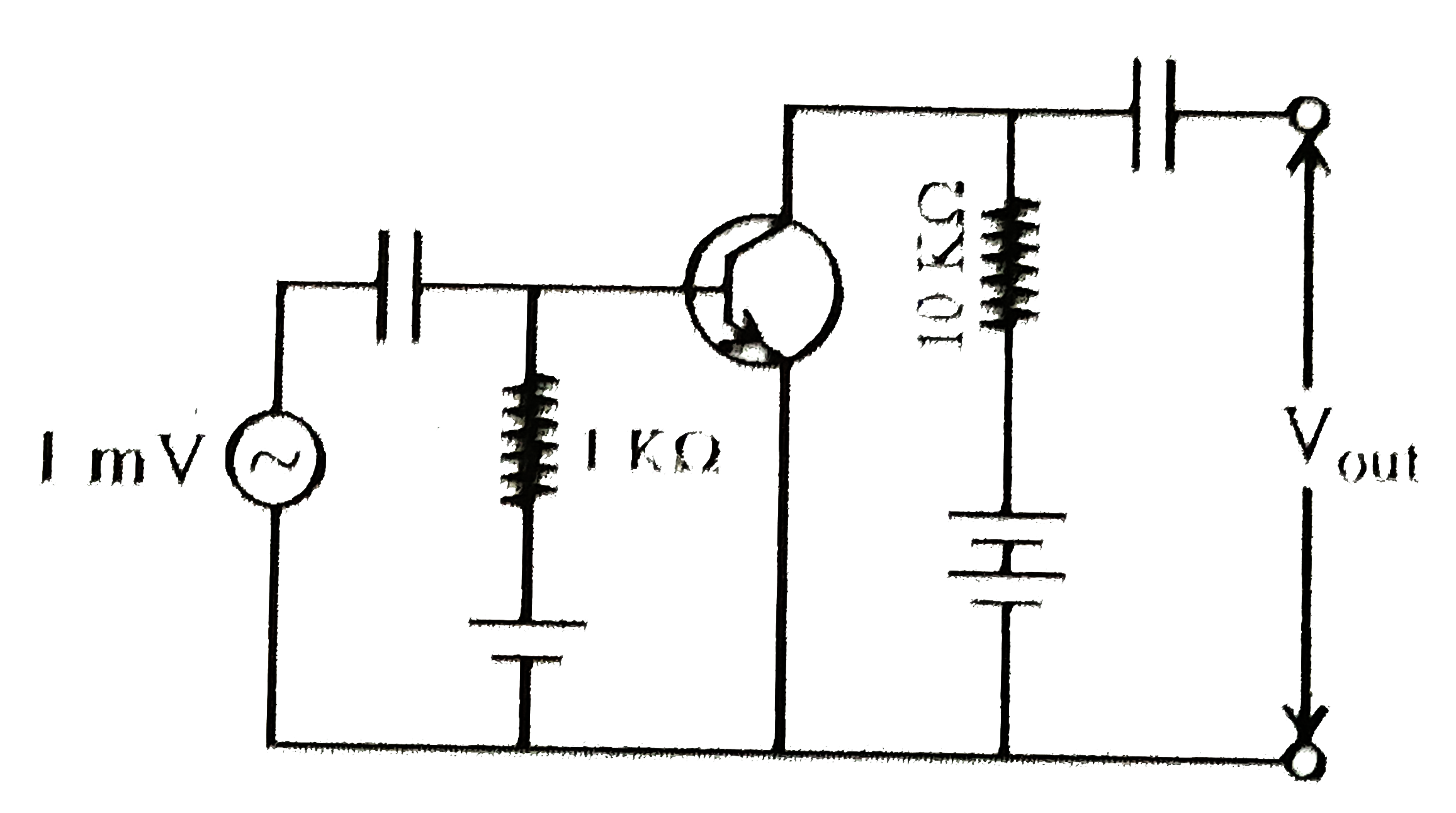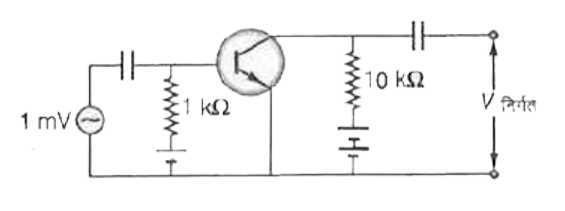In the following common emitter configuration an NPN transistor with current gain β=100 is used . The output voltage of the amplifier will be
 Solution in Kannada
Solution in Kannada
10 mV
0.1 V
1.0 V
10 V
The correct Answer is:C
Voltage gain =Output voltageInput voltage
Vout=Vin× Voltage gain
Vout=Vin× Current gain × Resistance gain
Vout×β=RLRBE=10−3×100×101=1V
Topper's Solved these Questions
- BOOK - MODERN PUBLICATIONCHAPTER - SOLIDS & SEMICONDUCTOR DEVICESEXERCISE - Multiple Choice Questions - LEVEL -III (Questions From AIEEE/JEE Examination)9videos
SOLIDS & SEMICONDUCTOR DEVICES
- BOOK - MODERN PUBLICATIONCHAPTER - SOLIDS & SEMICONDUCTOR DEVICESEXERCISE - Recent Competitive Questions26videos
SOLIDS & SEMICONDUCTOR DEVICES
- BOOK - MODERN PUBLICATIONCHAPTER - SOLIDS & SEMICONDUCTOR DEVICESEXERCISE - Multiple Choice Questions - LEVEL -I (PARAGRAPH)6videos
SOLIDS & SEMICONDUCTOR DEVICES
- BOOK - MODERN PUBLICATIONCHAPTER - ROTATIONAL MOTIONEXERCISE - RCQ8videos
ROTATIONAL MOTION
- BOOK - MODERN PUBLICATIONCHAPTER - TRANSFERENCE OF HEAT EXERCISE - Recent Competitive Questions4videos
TRANSFERENCE OF HEAT
Similar Questions
Statement - 1 : Sky wave signals are used for long distance radio communication. These signals are in general, less stable than ground wave signals. Statement - 2 : The state of ionosphere varies from hour to hour, day to day and season to season.
02:15View SolutionThe forbidden energy gap in Ge in 0.72 eV Given, hc=12400 eV−Å The maximum wavelength of radiation that will generate electron hole pair is
01:34View SolutionIn a triode value for a grid voltage Vg=−1.2V , the phase current Ip and plate voltage Vp are given Ip=(−5+0.1V0),Ip in mAandVp in volt . When grid voltage is changed to - 3.2 V at constant plate voltage of 150 V , a plate current of 5 mA is observed , then
Plate resistance Rp is01:47View SolutionThe moment of inertia of a circular disc of radius 2 m and mass 1 kg about an axis passing through the centre of mass but perpendicular to the plane of the disc is 2 kg m2. Its moment of inertia about an axis parallel to this axis but passing through the edge of the disc is :
 02:42View Solution
02:42View SolutionTwo slabs are of the thicknesses d1 and d2. Their thermal conductivities are K1 and K2 respectively They are in series. The free ends of the combination of these two slabs are kept at temperatures θ1 and θ2. Assume θ1>θ2. The temperature θ of their common junction is
01:37View SolutionIn the following common emitter configuration an NPN transistor with current gain beta=100 is used. The output voltage of the amlifier will be
02:30View SolutionThe current amplification of the common base NPN transistor is 0.96 . What is the current gain if it is used as common emitter amplifier?
02:07View SolutionIn the following common emitter configuration an NPN transistor with current gain beta=100 is used. The output voltage of the amlifier will be
02:14View SolutionIn the common emitter amplifier circuit, Fig. an npn transistor with output voltage of the amplifier as 1 V, the current gain of transistor amplifier is :
 03:01View Solution
03:01View SolutionIn the following common emitter configuration, and n-p-n transistor with current gain beta=100 is used. The output voltage of the amplifier will be
04:32View SolutionIn the following common emitter configuration an n-p-n transistor with current gain β=100 is used. What is the output voltage of the amplifier ?
 View Solution
View SolutionIn the following common emitter configuration an n-p-n transistor with current gain β = 100 is used. The output voltage of the amplifier will be
 02:14View Solution
02:14View SolutionIn the following common emitter configuration an n-p-n transistor with current gain alpha = 100 is used . The output voltage of the amplifier will be :
04:43View Solutionदिए गए परिपथ में n-p-n ट्रांजिस्टर उभयनिष्ठ-उत्सर्जक के रूप में जुड़ा है, जिसकी धारा लब्धि β=100 है, तो प्रवर्धक का निर्गत वोल्टेज होगा
 02:04View Solution
02:04View SolutionAn npn transistor operates as a common emitter amplifier, with a power gain of 60 dB. The input circuit resistance is 100Ω and the output load resistance is 10kΩ.The common emitter current gain β is :
02:54View Solution

